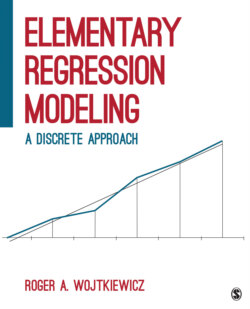Читать книгу Elementary Regression Modeling - Roger A. Wojtkiewicz - Страница 27
На сайте Литреса книга снята с продажи.
Proportion and Percentage
ОглавлениеThe proportion and percentage are two closely related statistics that we can use to describe a nominal or interval variable. The constraint on using proportions and percentages to describe interval variables is that the number of values for the interval variable needs to be reasonably small. At the extreme, if each value of the interval variable is unique, there will be as many proportions or percentages as there are values. The resulting proportions or percentages will be too many in number to be useful for analytical purposes:
where
P is the proportion
f is the frequency in a category
N is the number of units in the sample
% is the percentage
A simple statistical procedure is the frequency distribution. The frequency distribution provides the count for each category of a variable. Since sample sizes can vary, the frequency in a particular category is difficult to assess in terms of relative size. The proportion divides f by N and provides a statistic that says if the total N is 1.00, how much of the 1.00 is in each category. We calculate the percentage by multiplying the proportion by 100. The percentage provides a statistic that says if the total N is 100, how much of the 100 is in each category. The proportion and the percentage provide essentially the same information, differing only in units expressed. However, the percentage is the more widely used descriptive statistic.
